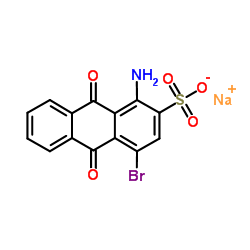[Degradation characteristics of bromoamine acid by Sphingomonas sp. FL].
Li Fan, Dong-qi Liu, Shun-ni Zhu, Jia-xing Mai, Jin-ren Ni
Index: Huan Jing Ke Xue 29(9) , 2618-23, (2008)
Full Text: HTML
Abstract
A bacterial strain that could degrade bromoamine acid (BAA) as the sole carbon source was isolated. It was identified as Sphingomonas sp. based on 16S rRNA gene sequence analysis and physio-biochemical characteristics. Under the optimal growth conditions, with temperature of 30 degrees C, pH of 7.0, rotating rate of 100 r/min and (NH4)2SO4 as the nitrogen source, the decolorization percentage of BAA (100 mg/L) could reach 99% within 14 h. NaCl of low concentration ( < 2%) facilitated the decolorization, while NaCl of higher concentration (> or = 2%) had inhibition effect. The effect of initial BAA concentration on decolorization could be described by the Haldane model, and the optimal specific decolorization rate of 1.4 h(-1) could be obtained when the initial concentration of BAA was 1393.5 mg/L. The strain could not mineralize BAA completely, and 52.4% of the total organic carbon was removed at the end of the reaction. The analysis of metabolites using GC-MS and HPLC-MS showed that phthalic acid was the metabolic intermediate which could be further degraded through 3, 4-dihydroxybenzoic acid route and serve as the growth substrate, and the end product was estimated to be either 2-amino-3-hydroxy-5-bromobenzenesulfonic acid or 2-amino-4-hydroxy-5-bromobenzenesulfonic acid.
Related Compounds
| Structure | Name/CAS No. | Molecular Formula | Articles |
|---|---|---|---|
 |
1-amino-4-bromoanthraquinone-2-sulfonic acid sodium salt
CAS:6258-06-6 |
C14H7BrNNaO5S |
|
Degradation of bromamine acid by nanoscale zero-valent iron ...
2012-01-01 [Water Sci. Technol. 66(12) , 2539-45, (2012)] |
|
Convergent synthesis of the potent P2Y receptor antagonist M...
2012-01-01 [Molecules 17(3) , 2599-615, (2012)] |
|
[Treatment of bromoamine acid wastewater by combined ALR-BAC...
2009-10-15 [Huan Jing Ke Xue 30(10) , 2930-5, (2009)] |
|
Rapid and efficient microwave-assisted copper(0)-catalyzed u...
2007-03-29 [Org. Lett. 9(7) , 1271-4, (2007)] |
|
Bioaugmentation of bromoamine acid degradation with Sphingom...
2006-02-01 [Biodegradation 17(1) , 83-91, (2006)] |